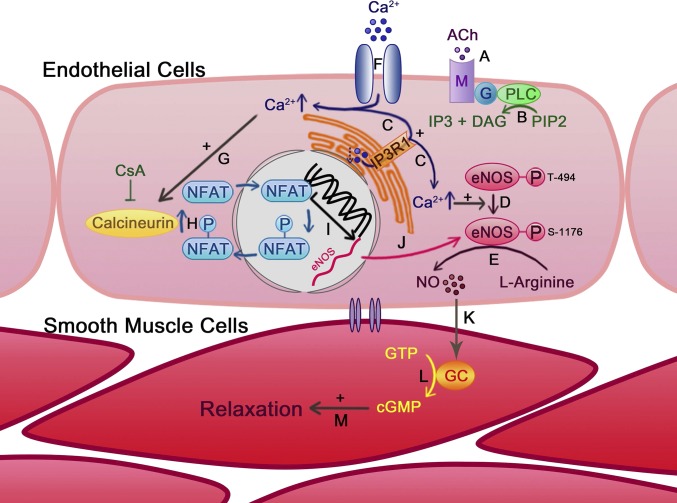Fig. 4.
Role of IP3R1 in ACh-induced vasodilation. ACh binds and activates muscarinic receptor (M) on the EC membrane (A), which leads to the production of diacylglycerol (DAG) and IP3 (B). (C) IP3 activates IP3R1 on the ER membrane to induce Ca2+ release from the ER store, resulting in the elevation of [Ca2+]i. Increased [Ca2+]i up-regulates eNOS activity by modifying the eNOS protein phosphorylation status (D) and promotes NO production from l-arginine (E). (F) Ca2+ reduction in the ER store induces extracellular Ca2+ entry through calcium channels. [Ca2+]i increase can also activate calcineurin (G), which dephosphorylates NFAT and promotes NFAT nuclear translocation (H). (I) NFAT induces eNOS gene transcription and translocates back into the cytoplasm. (J) eNOS protein level is transcriptionally up-regulated by an IP3R1-mediated Ca2+-release–dependent calcineurin/NFAT mechanism. EC-generated NO diffuses into adjacent smooth muscle cells (K) and activates guanylyl cyclase (GC) to generate cGMP from GTP (L), leading to smooth muscle relaxation (M).

